 |
 |
 |
| |
Better Survival With TDF Than Entecavir After Hepatectomy for HCC: "Tenofovir vs entecavir on post-operative recurrence-free and overall survival of patients with hepatitis B virus-related hepatocellular carcinoma"
|
| |
| |
EASL 2020, Digital International Liver Congress, August 27-29, 2020
Mark Mascolini
After curative hepatectomy for hepatitis B virus (HBV)-related hepatocellular carcinoma (HCC), overall and recurrence-free survival were significantly better in people treated after surgery with tenofovir disoproxil fumarate (TDF) than with entecavir in a 1695-person historical Korean cohort [1].
Guidelines recommend either TDF or entecavir as a first-line nucles(t)ide for chronic HBV infection. Some research suggests lower HCC risk in people taking TDF than in those taking entecavir [2], though results remain controversial. To see if either drug has an advantage after curative hepatectomy for HBV-related HCC, researchers at South Korea's University of Ulsan College of Medicine conducted this analysis.
The investigators built a historical cohort of 1695 consecutive HBV-related HCC patients who had curative hepatectomy; 813 of them received entecavir after surgery and 882 TDF. Everyone had hepatectomy in Korea between 2010 and 2020, and all had Barcelona clinic liver cancer (BCLC) stage 0 or A. The researchers compared patients in each treatment group by propensity score matching and multivariable adjusted Cox regression analysis.
The study group averaged 54.8 years in age, and three quarters (76.3%) were men, with little difference between TDF- or entecavir-treated people. The groups also differed little in proportion with diabetes (about 15%) or hypertension (about 29%).
In the overall population and the propensity score-matched population, the entecavir group had a significantly lower proportion who were HBeAg-positive (24.2% vs 26.3%, P = 0.05 for matched group) and had a lower average HBV DNA (2.2 vs 2.3 log10 IU/mL, P = 0.03 for matched group). Also in the propensity score-matched population, the entecavir group had significant or nearly significant advantages in BCLC stage (P = 0.04) and HCC size (P = 0.06), but the TDF group had significant advantages in proportion with microvascular invasion (26.1% vs 27.7%, P = 0.04) or cirrhosis (58.7% vs 60.0%, P = 0.03).
Median follow-up measured 37.6 months. In that time in an analysis of 567 propensity-score matched pairs of patients, those receiving TDF had a significantly lower rate of intrahepatic HCC recurrence (P = 0.008), longer recurrence-free survival (P = 0.02), and better overall mortality or transplantation rate (P = 0.03).
Adjusted regression analysis of the entire study group determined that TDF-treated people had almost a 20% lower risk of HCC recurrence (hazard ratio [HR] 0.82, 95% confidence interval [CI] 0.68 to 0.98, P = 0.03) and almost a 40% lower risk of death or transplantation (HR 0.62, 95% CI 0.44 to 0.88, P = 0.01).
In further multivariable analysis, TDF emerged as an independent protective factor for both early HCC recurrence (less than 2 years, HR 0.79, 95% CI 0.64 to 0.97, P = 0.03) and late recurrence (2 or more years, HR 0.68, 95% CI 0.47 to 0.97, P = 0.03).
Because postoperative recurrence of HBV-related HCC remains frequent-and because prognosis after recurrence is poor-the researchers suggest their findings "may have considerable clinical implications in the prevention of cancer recurrence" in such patients.
References
1. Choi J, Jo C, L YS, et al. Tenofovir vs entecavir on post-operative recurrence-free and overall survival of patients with hepatitis B virus-related hepatocellular carcinoma. EASL 2020, Digital International Liver Congress, August 27-29, 2020. Abstract AS094.
2. Choi WM, Choi J, Lim YS. Effects of tenofovir vs entecavir on risk of hepatocellular carcinoma in patients with chronic HBV infection: a systematic review and meta-analysis. Clin Gastroenterol Hepatol. 2020:S1542-3565(20)30642-X. doi: 10.1016/j.cgh.2020.05.008.
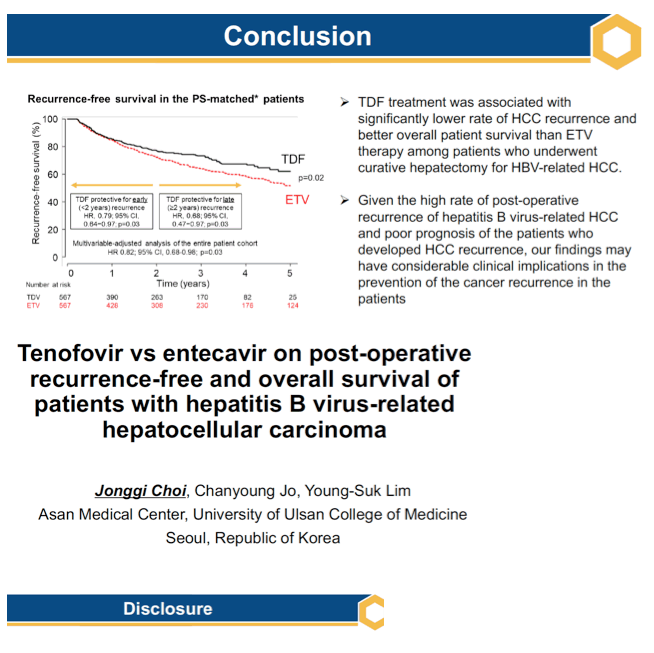
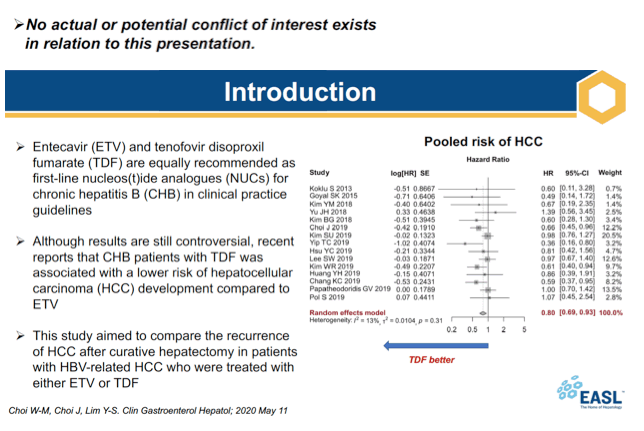
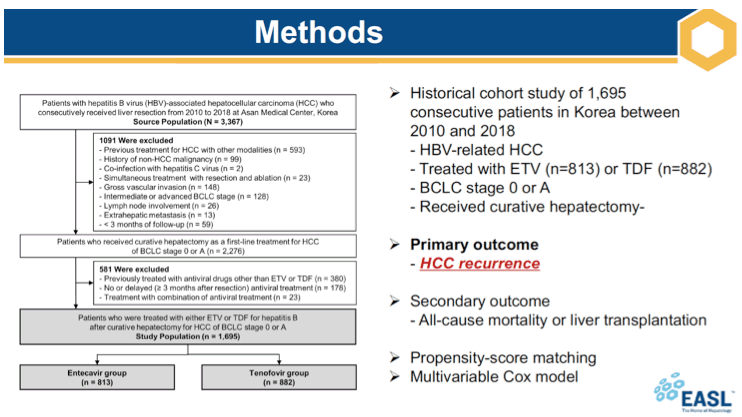
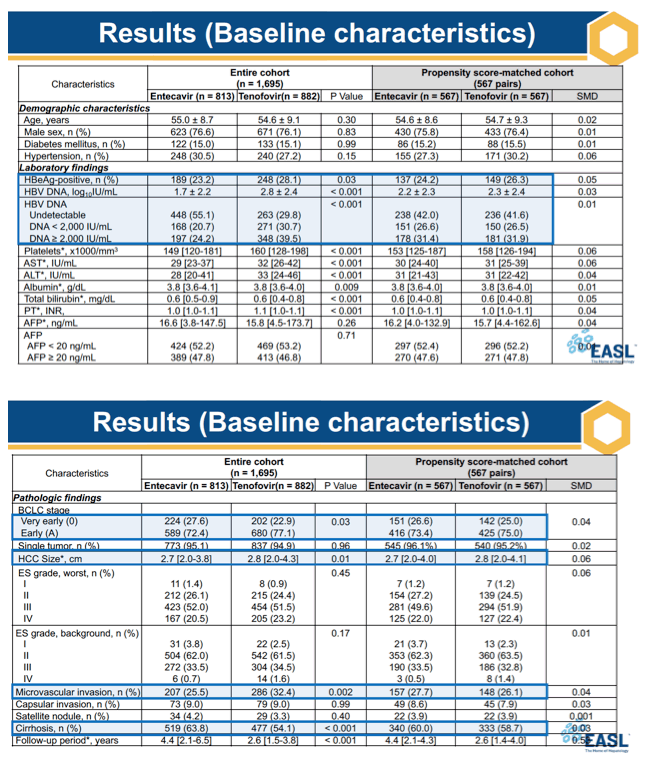
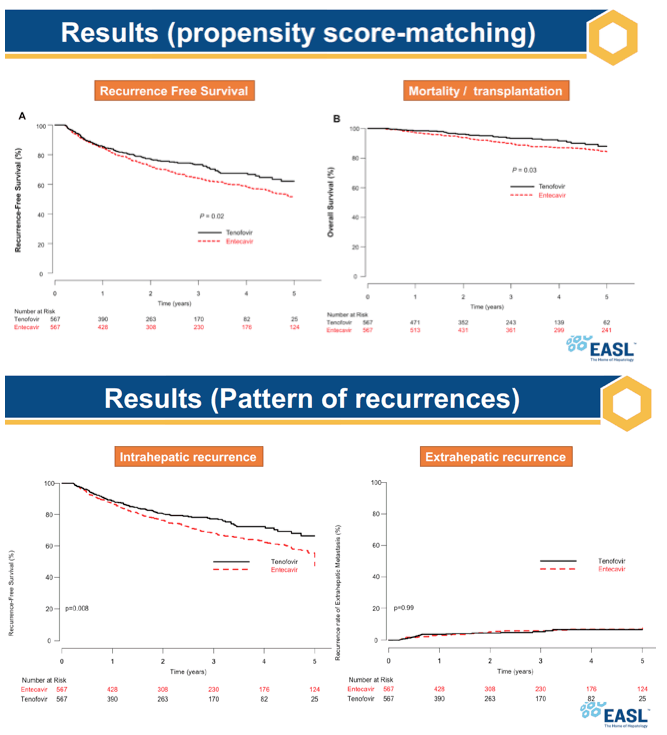
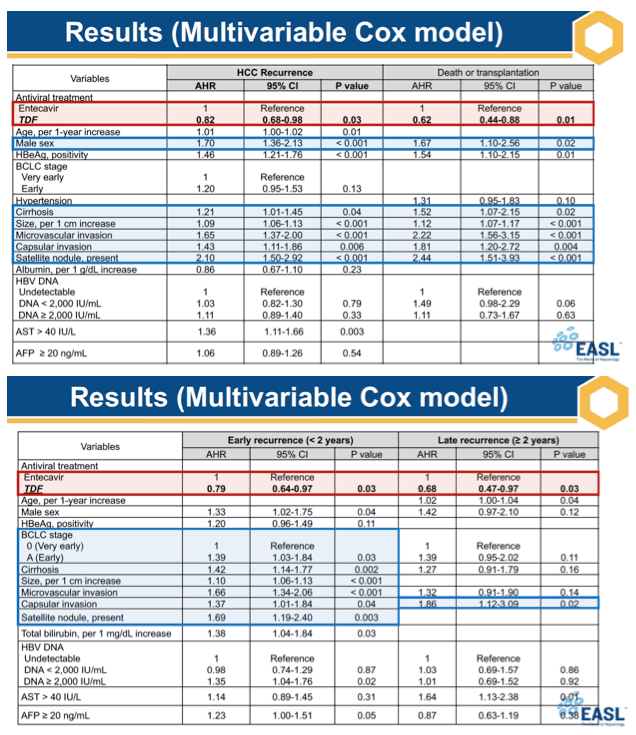
|
| |
|
 |
 |
|
|